Global Journal of Ecology
Environmental viability and economic sustainability of tillage for wheat: Evidence from Croatia
Stošić Miro, Brigita Popović* and Ljubica Ranogajec
Cite this as
Miro S, Popović B, Ranogajec L (2024) Environmental viability and economic sustainability of tillage for wheat: Evidence from Croatia. Glob J Ecol 9(1): 011-019. DOI: 10.17352/gje.000092Copyright
© 2024 Miro S, et al. This is an open-access article distributed under the terms of the Creative Commons Attribution License, which permits unrestricted use, distribution, and reproduction in any medium, provided the original author and source are credited.A multidisciplinary field experiment was performed during three seasons for winter wheat in Croatia. The intention of this study was to examine and diagnose the effect of Tillage Systems (TS) on soil chemical properties (soil acidity, phosphorus, potassium, and organic matter content) as well as the outcome of economic indicators such as Gross Margin (GM), Rate of Profitability (ROP), cost-effectiveness (E) and productivity (P). TS were CT - plowing up to 30 cm depth; DT - disking up to 8-12 cm depth; LT - loosening up to 35 cm depth; NT - no-tillage. The experimental design was a randomised block design in four repetitions, where the basic TS plot was 540 m2. Soil sampling for 0-30 cm soil layer was done prior to setting up the experiment and after three seasons, a total of 320 soil samples and chemical analyses were performed according to standard pedological procedures. Economic indicators are calculated using economic equations and standards and statistical analysis was performed with SAS 9.3 and Microsoft Excel 2016. Generated results point that on systems with shallower tillage or no- tillage expressed accumulation of phosphorus and potassium appeared with distinct vertical stratification. At the same time, these TS ensured soil organic matter and soil fertility preservation. From the aspect of economic calculations, LT assigned the prime economic results. The ROP was in order CT (32.67%) < DT (37.39%) < LT (40.31%) < NT (42.29%). The same order was established for E, namely, CT (1.33) < DT (1.37%) < LT (1.40%) < NT (1.42%). NT established the best P because of the lowest costs of production, but due to significantly lower yield, NT has limited adoption in practice. The conservable and viable agricultural production by intermediation of reduced soil tillage systems has its capabilities and potency, firstly ecological, through providing soil degradation, and then economical by potentiating economic sustainability and financial efficiency of agricultural production.
Introduction
Modern agriculture has recently been provoked to commit its operation recapitulation and modification due to alternations in soil, water, and environment caused by weather patterns and climate implications/aberrations [1,2]. The emergency and necessity for adaptation in agriculture and agricultural systems is a process which had been recognized in recent years amongst crop producers worldwide because of the global population increase [3]. Similarly, ecological, economic, and biological arguments influence the agricultural sector to alternate with demands of modified climate conditions, such as temperature extremes, droughts, water problems, desertification, high radiation, etc. [4,5]. In addition, from the point of view of producers, a lot of proactive and innovative arguments must be borne in mind, such as agroecological characteristics, government strategies and agendas, social demands, and last but not least, producer’s abilities, competencies, and qualifications [6,7]. Primarily, soil tillage and tillage implements generate rather high energy expenditure and cost. Consequently, they affect the financial and economic aspects and ultimately profit. In conventional tillage systems, the stability of higher good-quality yields is ensured. However, the costs of the utilization of agricultural machinery and human labour will be the highest bringing variability in the production process. Other practices, reduced or conservation tillage systems proffer positive impact on soil, environment, and soil biodiversity. On the other hand, yield and quality may be endangered and variability can be quite prominent over the years [8,9]. The basis of conservation agriculture production is in management set on three fundamental postulates, which contextually unify climate-soil-plant while respecting agroecological and socio-economic differences and mimicking natural ecosystems [10]. In general, elected soil tillage and tillage tools implicate the efficiency and performance of crop production. Climatic requirements and limitations, soil physical, chemical, and biological properties, disposable tillage mechanization, financial configuration, etc. are elements that highly influence and identify adequate tillage selection [11,12]. However, tillage anteriority will not be accomplished with possible loss of soil productivity. Soil productivity is the constitution of attributes that represent soil potency for agricultural crop production, defined by soil fertility, i.e. plant nutrient activity, whereas tillage implicates changes in nutrient content and distribution. There is a vast body of literature reporting on the influence of tillage on nutrients, e.g. Dorneles, et al. [13] pointed out that available phosphorus and potassium were significantly influenced by tillage systems, where in the 0-5 cm layer they recorded the highest values, apropos in reduced tillage. Also, pH, as they marked, in the surface layer at NT was highest, compared to conventional tillage. Probably due to soil disturbance reduction, the same tendency pertains to organic matter, where the highest values are registered at NT and RT. Issaka, et al. [14] highlight the fact that NT is the most appropriate and advisable tillage system for upgrading soil nutrients and reducing nitrogen and phosphorus dissipation. Lewis, et al. [15] claimed that using NT systems during the organic transition can increase soil quality without compromising yield and profitability. Other findings criticize reduced systems, especially NT, for tillage absence and nutrient stratification in the upper soil layer as a result of surface spreading [16,17]. Also, Daryanto, et al. [18] noted that N in NO3- form could be leached due to macropores continuity on NT. Suggesting cover cropping, catch crops, and injectors for fertilizers, to reduce leaching and raise N use capability. In terms of N leaching Struck, et al. [19] state how tillage intensity had no clear effect on drainage N-losses.
Farmers make farm input and production practice decisions based on their economic profit and loss situation [20]. From a producer’s perspective, there is an economic incentive to engage the crop rotation and soil tillage method [21] which provides the greatest (net) return to management and risk-taking in the short term for land equity, likewise other fixed production assets in the long term. Consequently, profit-motivated producers will seek to adopt a new cropping system only if it is perceived to provide a net economic benefit relative to a currently used system in terms of lower production costs, higher net returns, lower business risk, etc. [22]. The problems of agricultural production are largely due to the high labour costs of people, machinery, materials, and energy per unit area resulting in low labour productivity and unprofitable production. Based on a study by Kanisek, et al. [23] it has been established that CT in wheat production consumes
19.6 h ha-1 of machinery operation and 121.2 l ha-1 of fuel consumption. Total costs were 827.32 € ha-1, cost price was 137.89 € t-1, profit was 60.78 € ha-1 and the rate of net return was 7.3%. Reduced tillage reduced costs of machinery by 40.03 € ha-1. Total costs were lower by 8.5% while profit increased to
99.30 € ha-1 and the net return was 13.1% [23]. One of the most critical factors in increasing the intensity of work processes in agriculture is to increase the level of technical equipment and increase labour productivity [24]. Kumar, et al. [25] and Sapkota, et al. [26] reported about enlarged productivity and profitability on zero and reduced tillage, compared to CT, while Parihar, et al. [27] recorded an increase in net profit under zero tillage (+31%) and a lower production cost (for 66 € ha-1) than CT. Therefore, we evaluated the impact of different soil tillage on:
(1) Economic indicators such as profitability, cost effectivity, and contribution margin, and (2) changes in soil chemical properties over a 3-year period.
Materials and methods
Research site description
A 3-year study field trial was conducted in a winter wheat-soybean cropping system at a research station in Slavonia and Baranya County, Croatia (45° 37′ N, 18° 42 E, 83 m elevation). The soil, according to FAO IUSS Working Group WRB [28], was silt loam [29] and belongs to a group of acidic soils with medium content of organic matter, low phosphorus and medium potassium content [30]. Prior to the experiment, winter wheat-maize-sunflower-sugarbeet was cultivated for 20 years using recommended fertilizers rates and conventional tillage (plowing) with crop straw return, and the average wheat yield was 8.57 t ha–1.
Experimental design and operations
The investigation comprised tillage systems (TS): 3-year plowing up to 30 cm (CT); 3-year disking up to 12 cm (DT); 3-year subsoiling up to 35 cm (LT); and 3-year no-tillage (NT). The basic tillage plot was 30 m × 18 m (540 m2) with 120 rows of wheat spaced 0.15 m. A randomized complete block design was used in four repetitions (16 plots) and the winter wheat cultivar Srpanjka was sown. Machinery performance and soil operations used for the different TS are shown in Table 1.
In each vegetation season, 175 kg ha-1 P2O5 (288 kg ha-1 monoammonium phosphate) and 90 kg ha-1 K2O (150 kg ha-1 potassium chloride) were used on basic tillage plots as primary fertilization. Nitrogen (150 kg ha-1) was applied on three occasions, during prime fertilization (35 kg ha-1 from monoammonium phosphate) and 45 kg ha-1 (urea) and in tillering (40 kg ha-1) and jointing (30 kg ha-1) phase as calcium ammonium nitrate on each plot. Weed, pests and disease, the amount of seeds, likewise harvest were the same for all systems. The detailed number of passes and human and machinery working hours on diverse TS are displayed in Table 2.
As part of this experiment, fertilization was carried out with three nitrogen levels (120, 150, and 180 kg N ha-1), but due to the large number of data, the results obtained by fertilizing 150 kg N ha-1 are shown, which is in accordance with the EU nitrate directive.
Soil sampling and analysis
Prior to starting the investigation, after the barley harvest soil samples were collected from all TS in four repetitions and 0-30 cm depth using a professional pedological probe (SP50, Dendrotik). Soil sampling was carried out as the baseline/initial status of soil chemical properties. Samples were collected from ten points (each point had five samples that were mixed to create a composite sample) per plot. The same procedure was done after the wheat harvest according to GPS coordinates afterward three years of field trials and total number of soil samples was 320. Heterogeneous soil samples were sieved through a 7 mm sieve and crop and root remained, likewise gravels were disposed of while samples were air dried under shadow. Soil chemical and pedological analyses were performed according to standard procedures, as follows: soil pH (HOH and KCl) according to ISO standard (ISO 10390) [31], phosphorus and potassium content (AL-P2O5 and K2O, mg kg-1) according to Egner, et al. 1960. [32], and humus (%) vis a vis ISO standard (14235) [33].
Economic analysis
The economic analysis of TS is based on the tillage depth and the number of passes, in order to identify human labour and machinery productivity and efficiency as well as cost-effectiveness, rate of profitability, and contribution/gross margin. Based on the calculation, absolute and relative production performance indicators were calculated. Absolute indicators are the Value of Production (VP), Variable Cost (VC) and Gross Margin (GM).
The value of production (VP, € ha-1) is based on the grain yield of wheat and achieved by multiplying the quantity of product (t ha-1) with the selling price (€ ha-1) and was defined as follows:
𝑉𝑃 = 𝑞𝑢𝑎𝑛𝑡𝑖𝑡𝑦 𝑜𝑓 𝑝𝑟𝑜𝑑𝑢𝑐𝑡 × 𝑠𝑒𝑙𝑙𝑖𝑛𝑔 𝑝𝑟𝑖𝑐𝑒
Variable Costs (VC, € ha-1) include the sum of costs (€ ha-1) of seeds, mineral fertilizers, plant protection, and human and machinery labour and were defined as follows:
𝑉𝐶 = 𝑠𝑒𝑒𝑑𝑠 + 𝑚𝑖𝑛𝑒𝑟𝑎𝑙 𝑓𝑒𝑟𝑡𝑙𝑖𝑧𝑒𝑟 + 𝑝𝑙𝑎𝑛𝑡 𝑝𝑟𝑜𝑡𝑒𝑐𝑡𝑖𝑜𝑛 + ℎ𝑢𝑚𝑎𝑛 𝑙𝑎𝑏𝑜𝑢𝑟 + 𝑚𝑎𝑐ℎ𝑖𝑛𝑒𝑟𝑦 𝑙𝑎𝑏𝑜𝑢𝑟
The gross margin (GM, € ha-1) has been obtained by subtracting the Variable Costs (VC) of a particular TS from the total Value of Production (VP) and was defined as follows:
𝐺𝑀 = 𝑉𝑃 − 𝑉𝐶
Relative performance indicators include Cost Price (CP), cost-effectiveness (E), productivity (P), and rate of profitability (ROP) of production. The cost price (CP, € kg-1) has been obtained by dividing variable costs (VC) by the quantity of product (t ha-1) and was defined as follows:
Cost-effectiveness (E) is calculated by dividing the amount of Value of Production (VP) and Variable Cost (VC). The following equation has been used:
The Rate of Profitability (ROP) is obtained by the Gross Margin (GM) multiplied by 100 and then divided by Variable Costs (VC) and is expressed by the following equation:
Productivity represents the ratio of human labour consumption (h ha-1) to the quantity of product (t ha-1) and is calculated by the following equation:
Data analysis
All obtained data were subjected to analysis of variance (ANOVA) using the Principal Component Analysis (PCA) and general linear model procedures of the statistical analysis system (SAS 9.3 software package (SAS Institute Inc., NC, USA)). Correlation analysis carried out by tool pack of MS Excel 2016.
Results
Soil chemical properties
On acidic soil with low phosphorus content, medium potassium, and medium humus content the winter wheat trial was conducted (Table 3).
Such soils belong to a group of soils with less actual fertility, which classifies them into soils very suitable for research related to the efficiency of different soil tillage on the productivity of crop production. The impact of diverse TS on wheat grain yield was published [34] and according to them a significant difference in yield was determined on NT, compared to other TS, with an average yield of 6.94 t ha-1 wheat grain. According to PCA analysis of all variables, the greatest influence of TS was determined in the phosphorus and potassium content, while the soil acidity ratios as well as humus were less influenced by the TS (Figure 1).
ANOVA confirmed determined relationships and a significant difference was primarily found in phosphorus and potassium content. The NT system had a statistically significantly higher content of phosphorus and potassium compared to all other TS. Soil acidity (pH KCl) was also influenced by the TS, with only differences between CT and NT. Between TS no significant difference was found for humus content (Table 4).
In general, according to TS, phosphorus content was higher on NT compared to all other TS at 26 % and potassium at 13 %, respectively.
Furthermore, for soil phosphorus and potassium content, a positive correlation was found between NT and DT r = 0.78 (phosphorus content) and r = 0.87 (potassium content) (Figures 2,3).
Economic analysis
The basic economic indicators in wheat production, with regard to different types of tillage, showed that the costs of NT were the lowest, by 13.5% (VC), and 9.9% (VP), respectively. Regarding GM, it was found that in relation to CT, the values of GM were higher by 9.7% in DT, 16% in LT, and 8.8% in NT. A higher CP was determined for NT compared to CT (13.5%) and lower for DT and LT (4.4%). The value of E was on average 5% higher in all treatments compared to CT. The value of P was the lowest on NT at 20.6 % compared to all other TS. On all tillage systems, a higher ROP was found in relation to CT, for DT (12.5%), LT (18.9%), and NT (22.7%).
Statistical analysis (ANOVA) of the financial results for each TS was also, estimated. Input values refer to the variable cost of wheat production. The costs of seeds, mineral fertilization, and plant protection agents are the same for all TS. Between these costs, there are no statistically significant differences. Human and machine labour (VC) have different values with significant differences between all TS and the lowest obtained by NT.
The significantly lowest VC was determined in the NT compared to DT, CT, and LT. The highest GM was on LT while the lowest GM was on CT, with significant differences between reduced TS compared to CT. The highest VP was recorded by LT > DT > CT and the significantly lowest was obtained by NT (Figure 4).
Considering CP, a statistically significant difference was found between all TS, with the statistically highest cost by NT. E as an indicator of the efficiency of the invested funds had the highest value for the LT, while the lowest for the NT, with significant differences between all TS (Figure 5).
P values were the best with NT because it takes fewer hours to produce one ton of wheat compared to other TS. Specifically, in our research, the results show that for the production of one ton of wheat on the NT it took 0.75 working hours which was significantly less compared to other TS. (Figure 6).
The same ratios and significant differences were determined for ROP maximum for LT and minimum for NT (Figure 7).
Discussion
Soil quality
Soil chemical properties are a very important and limiting factor that directly and indirectly affects the level of plant production and crop yield [35]. According to the Technological Instructions for interpreting the results of soil fertility testing of the Republic of Croatia, the analyzed soil belongs to a group of acidic soils with medium content of organic matter, low phosphorus, and medium potassium content [36].
One of the soil chemical factors that directly implicates the availability of plant nutrients or elements of plant nutrition is soil acidity [37]. In these studies, changes in soil pH (HOH and KCl) were monitored at the depth of the arable layer 0-30 cm. The results presented in Table 3. Showed a change related to the influence of soil tillage on changes in soil chemical properties compared to the initial state. In all tillage systems, there was a decrease in soil pH and organic matter content. Similar reports about organic matter were noted by Araujo, et al. [38], although Šimanský, et al. [39] and Kibet, et al. [40] had reported contrary results that reduced tillage preserved a significantly greater amount of organic matter in the topsoil layer compared to CT. Ghimire, et al. [41] stated that soil pH was higher in DT than in CT systems in soil layers 0-10 and 10-20 cm. Obour and Holman [42] underline also a significant decrease in soil pH in the topsoil layer on NT compared to CT. Also, Margenot, et al. [43] registered a decrease in soil pH under reduced tillage. Meantime, tillage, especially on CT or some reduced systems, generates soil mixing and disposition of subsoil that has proportionally higher pH and Ca2+ and Mg2+ concentrations which can contribute to the modification of soil pH changes on CT or tilled systems.
Also, there was a decrease in phosphorus and potassium content on all systems except NT, where an increase in the content of these elements was recorded. The content of phosphorus and potassium in arable soil is an extremely important component of plant nutrition [44], especially in systems of reduced or no-tillage, as in these systems nutrients remain on the surface. A more detailed analysis of changes in the phosphorus content shows that the increase occurred only in some TS, especially in those systems where there was less soil mixing and inversion. However, for reduced TS where the subsoil was not affected by tillage such as the DT, partly LT, and fully NT, phosphorus accumulation occurred. Such changes in the phosphorus content are due to the shallow application of mineral fertilizers, i.e. shallow mixing of fertilizers with the soil surface layer on some variants (DT), or due to the application of mineral fertilizer on the soil surface, as is the case with the NT variant. These results are in accordance with the findings of Alam, et al. [45] who found significant phosphorus stratification in the topsoil layer (0-6 cm), but despite this stratification, and increased plant available water and root mass density, it did not affect the yield. Nevertheless, phosphorus stratification is not always registered with NT, as reported by Jones, et al. [46]. They found that after 30 years of converting NT to CT, or CT to NT, no vertical stratification of phosphorus or classical model of phosphorus accumulation was confirmed. Abdi, et al. [47] stated that NT changed the distribution of phosphorus classes through soil profile, escalating soluble phosphorus (inorganic form) loss by runoff and organic phosphorus leaching. All of these changes lead to the minimization of total phosphorus (inorganic and organic) bioavailability in deeper soil horizons.
Furthermore, potassium content and vertical dynamics in this study were also influenced by soil tillage and very similar to that of phosphorus where significant accumulation of potassium content in the topsoil layer was observed, especially on DT and NT systems. Again, as on no tilled systems, or systems with shallow mixing of the surface layer. Surface and uneven accumulation of nutrients and possible problems in plant nutrition occur. Neugschwandtner, et al. [48] observed that no-tillage accumulated more potassium in the topsoil layer (0-10 cm) than tilled systems. Confirmation was also reported by Tan, et al. [49] noticing that a significantly higher content of available potassium was recorded in the 0-10 cm layer. It is indisputable that an increase of potassium (as well as phosphorus) content in the topsoil layer (0-10 cm) of systems with shallow tillage, and especially with the no-tillage is to be expected, which was further confirmed by Munson [50], accentuating the necessity of raising phosphorus and potassium content before establishing a reduced tillage system. By reduction of soil inversion in no-tillage and by increasing potassium/or phosphorus content in 0-10 cm layer, soil available potassium/or phosphorus in deeper layers decreased [51]. As on non-tilled systems, or systems with shallow mixing topsoil, the fact that nutrients are located on the surface can lead to physical isolation between the available nutrients (phosphorus and potassium) and the root system [52,53], although Asenso, et al. [54] that zero tillage potentiate more available NPK. In order to prevent and conserve chemical, biological, and hydrological aspects of viable soil the organic matter content is a remarkably relevant soil component [55]. With regard to changes in organic matter content, it should be noted that the period observed in these studies was too short to better monitor significant changes in this indicator, and only a decrease in organic matter content was found on all systems compared to the initial state (Table 3). Some studies show that reduced tillage strived to increase soil matter, mostly due to crop rotation [56,57]. However, to maintain and preserve organic matter content, Goryanin, et al. [58] allegate the need to import 6.7-8.0 t ha-1 of organic manure per year to compensate balance of the organic matter deficit. According to infinite authors, in the long term, organic matter and certain nutrients accumulate on the no-tillage system during the initial years (NPK) on the soil surface, which cannot be used by plants. It is necessary to apply larger quantities of mineral fertilizers in basic fertilization. Namely, tillage accelerates the oxidation of organic matter and the mobilization of nutrients from it. This is not the case in the no-tillage system due to leaving harvest residues on the soil surface.
Impact of diverse TS on financial indicators
Economic analysis indicates a significant difference in profits between different tillage systems. The LT is the most efficient, with a gross margin of 335 € t-1. Poor economic results were achieved with the CT system with a gross margin of 280 € t-1. According to Jabran and Aulakh [59], zero and reduced tillage obtained the highest net returns of 558 and 535 US$, while the lowest was attained by conventional tillage (445 US$). Žurovec, et al. [60], Shahzad, et al. [61], and Dzoma (2017) obtained similar results. Indicators that are a direct result of income-cost ratios such as cost-effectiveness and rate of profitability have the same tendencies and are the most favorable with the LT. Cost price and productivity were the most favorable with reduced NT tillage requiring fewer machinery operations and less human labour. Fuentes-Llanillo, et al. [62] claim that “NT systems had higher gross margins which were associated with longer use of the no-till system, ownership of machinery and equipment, specialization in grains, rotation of the commercial crops used, and higher variable costs“. Therefore, the decrease in costs for the NT is not justified because it did not result in adequate yield. Generally, the share of production costs in the value of production for the NT was as 70% while for the LT was 72%, DT 73%, and CT 74%.
Given that investment is an important factor in any agricultural production, the results obtained can be used to introduce different types of tillage to farmers due to reduced costs. Likewise, a positive effect of different TS on the economic and ecological aspects of agricultural production has been established. Previous studies have found similar results and Canales, et al. [63] claimed that a combination of no-till systems and cover crops could boost soil benefits while Clark [64], while Teklewood, et al. [65] found complementarities between conservation tillage and other soil and water conservation practices. Our research improves on earlier efforts in several ways. First, we provided a detailed deep screening economic analysis showing that significant reductions in finances (alleviation of tillage costs, reduced tillage frequency, diminished GHG emissions, decrease in fuel consumption, etc.) can be achieved with the application of some reduced tillage systems, for example, DT and LT, by attaining high yield [66]. Secondly, the application of these systems can significantly improve and maintain soil quality, such as phosphorus and potassium content and availability, and enlargement in the abundance of different phosphorus fractions, ultimately leading to greater eco-friendly sustainability [67]. The endorsement of these strategies could boost the use efficiency of P and K, essentially declining the new fertiliser intake, and promising financial cutting-backs in the coming decades [68]. Third, the economic and environmental aspects of agricultural production can largely determine the success of agricultural production itself and results from these research efforts found that the greatest potential for sustainability existed with the use of reduced tillage systems. Lastly, the application of these systems could help farmers combat climate change and aberrations, high and expensive production, use of high amounts of fertilizers, a greater abundance of biodiversity, etc [69]. Since tillage is one of the operations in agricultural production that suggest benefits in agroecosystems [70]. A future research challenge remains to certify research results from production systems quantifiable in the direction of long-term agronomic, economic, and soil conservation and preservation impacts.
Conclusion
We examined that tillage systems in the function of ecological and economic sustainability of agricultural production show their effectiveness in both directions. In other words, the use of different tillage systems ensures ecologically acceptable agricultural production, which is primarily reflected in a reduced number of mechanized passes, less fuel consumption, human labor, and reduced degradation of soil chemical properties. Namely, conventional or classic soil cultivation is expensive, especially in this time of crisis, because 40 percent of all agricultural production costs are attributed to cultivation, and even 80 percent of that is to plowing. NT tillage in this research stood out as the most favorable in both observed aspects. On the one hand, it guarantees the preservation of organic matter in the soil and is the most profitable due to the favorable ratio of input and output in wheat production. However, this method of tillage does not ensure sufficient wheat yields, so its application in practice is limited. Perspective systems for economic profitability and environmental acceptability were LT and DT tillage systems that ensure high yields with satisfactory economic results. Moreover, these tillage systems can be a good solution for agro-climatic areas where climate changes are pronounced, especially in dry conditions. Nevertheless, farmers have the main role of actors in the dictation of agricultural production. In the Republic of Croatia, the so-called Conservation Agriculture Eco Scheme has been implemented recently. It is an intervention within production-unrelated direct payments that is paid out in the form of compensation for additional costs and loss of income resulting from assumed obligations. The intervention is carried out on arable land and represents a modern concept of agricultural plant production, which aims to achieve a high and sustainable level of production while preserving natural resources and achieving an acceptable profit, and is based on three interdependent principles: a minimum set of tillage interventions, permanent coverage of the production area plants or plant residues and proper crop rotation (crop rotation).
We thank the Department for Agroecology and Environmental Protection Laboratory (Faculty of Agrobiotechnical Sciences Osijek, Croatia) for excellent practical support in soil analyses for this study.
- Edenhofer O, Pichs- Madruga R, Sokona Y, Farahani E, Kadner S, Seyboth K, Adler A, Baum I, Brunner S, Eickemeier P, Kriemann B, Savolainen J, Schlomer S, von Stechow C, Zwickel T, Minx JC. (Eds.)]IPCC (Intergovernmental Panel on Climate Change). 2014. Summary for Policymakers. In: Climate Change 2014. Mitigation of Climate Change. Contribution of Working Group III to the Fifth Assessment Report of the Intergovernmental Panel on Climate Change. Cambridge University Press, Cambridge, United Kingdom and New York, NY, USA.
- Rasmussen SB, Blenkinsop S, Burton A, Abrahamsen P, Holm PE, Hansen S. Climate change impacts on agro-climatic indices derived from downscaled weather generator scenarios for eastern Denmark. Eur J Agron. 2018; 101: 222-238. https://dx.doi.org/10.1016/j.eja.2018.04.004
- UN (United Nations, Department of Economic and Social Affairs, Population Division). World Population. Prospects 2019. Highlights (ST/ESA/SER.A/423). ttps://population.un.org/wpp/Publications/Files/WPP2019_Highlights.pdf (accessed 10 February 2020)
- Chun-xiao S, Rui-feng L, Oxley L, Heng-yun MA. Do farmers care about climate change? Evidence from five major grain-producing areas of China. J. Integr. Agric. 2019; 18: 1402-1414. http://dx.doi: 10.1016/S2095-3119(19)62687-0
- Cammarano D, Ceccarelli S, Grando S, Romagosa I, Benbelkacem A, Akar T, Al-Yassin A, Pecchioni N, Francia E, Ronga D.The impact of climate change on barley yield in the Mediterranean basin. Eur J Agron. 2019; 106: 1-11. https://dx.doi.org/10.1016/j.eja.2019.03.002
- Norman D. Transitioning from paternalism to empowerment of farmers in low-income countries: Farming components to systems. J. Integr. Agric. 2015; 14: 1490-1499. https://dx.doi.org/10.1016/S2095-3119(15)61041-3
- FAO (Food and Agriculture Organization of the United Nations). 2016. What is Conservation Agriculture? http://www.fao.org/ag/ca/1a.html
- Lundy ME, Pittelkow CM, Linquist BA, Liang X, van Groenigen KJ, Lee J, Six J, Venterea RT, van Kessel C. Nitrogen fertilization reduces yield declines following no-till adoption. Field Crops Res. 2015; 183: 204-210. http://dx.doi.org/10.1016/j.fcr.2015.07.023
- Feizienė D, Feiza V, Kārkliņš A, Versuliene A, Janušauskaitė D, Antanaitis S. After-effects of long-term tillage and residue management on topsoil state in Boreal conditions. Eur J Agron. 2018; 94: 12-24. https://dx.doi.org/10.1016/j.eja.2018.01.003
- Mitchell JP, Reicosky DC, Kueneman EA, Fisher J, Beck D. Conservation agriculture systems. CAB Rev. 2019; 14: 1-25.
- Servadio P, Bergonzoli S, Beni C. Soil tillage systems and wheat yield under climate change scenarios. Agronomy. 2016; 6: 1-11. http://dx.doi:10.3390/agronomy6030043
- Karimi V, Karami E, Keshavarz M. Climate change and agriculture: Impacts and adaptive responses in Iran. J. Integr. Agric. 2018; 17: 1-15.
- Dorneles EP, Brito Lisboa BB, Abichequer AD, Bissani CA, Meurer EJ, Vargas LK. Tillage, fertilization systems, and chemical attributes of a Paleudult. Sci. Agric. 2015; 72: 175-186. http://dx.doi.org/10.1590/0103-9016-2013-0425
- Issaka F, Zhang Z, Zhao ZQ, Asenso E, Li JH, Li YT, Wang JJ. Sustainable conservation tillage improves soil nutrients and reduces nitrogen and phosphorous losses in maize farmland in southern China. Sustainability. 2019; 11: 1-13. http://dx.doi.org/10.3390/su11082397
- Lewis DB, Kaye JP, Jabbour R, Barbercheck ME. Labile carbon and other soil quality indicators in two tillage systems during transition to organic culture. Renew. Agric. Food Syst. 2011; 26: 342-353. https://dx. doi.org/10.1017/S1742170511000147
- Smith DR, Huang C, Haney RL. Phosphorus fertilization, soil stratification, and potential water quality impacts. J Soil Water Conserv. 2017; 72: 417-424. http://dx.doi:10.2489/jswc.72.5.417
- Dodla S. No-till conservation agriculture and fertilizer use. Louisiana Agriculture Magazine, 101 Efferson Hall Baton Rouge, LA 70803. 2017.
- Daryanto S, Wang L, Jacinthe PA. Impacts of no-tillage management on nitrate loss from corn, soybean and wheat cultivation: A meta-analysis. Sci Rep. 2017 Sep 21;7(1):12117. doi: 10.1038/s41598-017-12383-7. PMID: 28935905; PMCID: PMC5608951.
- Struck IJ, Reinsch T, Herrmann A, Kluß C, Loges R, Taube F. Yield potential and nitrogen dynamics of no-till silage maize (Zea mays L.) under maritime climate conditions. Eur J Agron. 2019; 107: 30-42. https://dx.doi.org/10.1016/j.eja.2019.04.009
- Schimmelpfennig D. Crop production costs, profits, and ecosystem stewardship with precision agriculture. J. Agric. Appl. Econ. 2017; 50: 1-23. https://dx.doi.org/10.1017/aae.2017.23
- Wittwer RA, van der Heijden MGA. Cover crops as a tool to reduce reliance on intensive tillage and nitrogen fertilization in conventional arable cropping systems. Field Crops Res. 2020; 249: 1-11. https://dx.doi.org/10.1016/j.fcr.2020.107736
- Li Z, Yang X, Cui S, Yang Q, Yang X, Li J, Shen Y. Developing sustainable cropping systems by integrating crop rotation with conservation tillage practices on the Loess Plateau, a long-term imperative. Field Crops Res. 2018; 222: 164-179. http://dx.doi.org/10.1016/j.fcr.2018.03.027
- Kanisek J, Žugec I, Bukvić Ž. Organizacija, ekonomika i energetika primjene različitih načina obrade tla pri proizvodnji pšenice. Proceedings of XXXIV Scientific Meeting of Croatian Agronomists with International Participation. 1998; 8: 14-20.
- Španić S, Potkonjak S. Methodology improving of costs calculation by exploitation of operating and self-propelled machines at agriculture and water management. Tractors and power machines. 2005; 10: 65-70.
- Kumar V, Saharawat YS, Gathala MK, Jat AS, Singh SK, Chaudhary N, Jat ML. Effect of different tillage and seeding methods on energy use efficiency and productivity of wheat in the Indo-Gangetic Plains. Field Crops Res. 2013; 142: 1-8. https://dx.doi.org/10.1016/j.fcr.2012.11.013
- Sapkota TB, Jat ML, Aryal JP, Jat RK, Khatri-Chhetri A. Climate change adaptation, greenhouse gas mitigation and economic profitability of conservation agriculture: Some examples from cereal systems of Indo-Gangetic Plains. J. Integr. Agric. 2015; 14: 1524-1533. https://dx.doi: 10.1016/S2095-3119(15)61093-0
- Parihar CM, Jat SL, Singh AK, Kumar B, Singh Y, Pradhan S, Pooniya V, Dhauja A, Chaudhary V, Jat ML, Jat RK, Yadav OP. Conservation agriculture in irrigated intensive maize-based systems of north-western India: Effects on crop yields, water productivity and economic profitability. Field Crops Res. 2016; 193: 104-116. https://dx.doi.org/10.1016/j.fcr.2016.03.013
- IUSS Working Group WRB. 2015. World Reference Base for Soil Resources 2014, update 2015. International soil classification system for naming soils and creating legends for soil maps. In: World Soil Resources Reports No. 106. FAO, Rome.
- FAO/IIASA/ISRIC/ISS-CAS/JRC. 2009. Harmonized World Soil Database (version 1.1). FAO, Rome, Italy and IIASA, Laxenburg, Austria. http://www.fao.org/3/a-i3822e.pdf
- Official Gazette, Agricultural Land Act, 20/18, 115/18, 98/19. https://www.zakon.hr/z/133/Zakon-o- poljoprivrednom-zemlji%C5%A1tu
- International Organization for Standardization. [ISO 10390: 1994 (E)], 1994c. Soil quality – Determination of pH.
- Egner H, Riehm H, Domingo WR. Investigations on chemical soil analysis as the basis for estimating soil fertility. II. Chemical extraction methods for phosphorus and potassium determination. Swed. J. Agric. Res. 1960; 26: 199-215.
- International Organization for Standardization. [ISO 14235: 1998 (E)], 2015. Soil quality – Determination of organic carbon by sulfochromic oxidation.
- Stošić M, Brozović B, Tadić V, Stipešević B, Jug D. Effect of soil tillage and nitrogen fertilization treatments on winter wheat grain yield. Rom Agric Res. 2017; 34: 105-111.
- Yan B, Hou Y. Soil chemical properties at different toposequence and fertilizer under continuous rice production-a review. IOP Conf. Ser. Earth Environ. Sci. 2018; 170: 1-6. https://dx.doi:10.1088/1755-1315/170/3/032107
- Official Gazette, Rulebook on methodology for monitoring the condition of agricultural land, 47/19. https://narodne-novine.nn.hr/clanci/sluzbeni/2014_04_43_800.html
- Neina D. The role of soil pH in plant nutrition and soil remediation. Appl Environ Soil Sci. 2019; 1-9. https://dx.doi.org/10.1155/2019/5794869
- Araújo A, Leite L, Lima Miranda AR, Nunes L, Sousa R, Araújo F, Melo W. Different soil tillage systems influence the accumulation of soil organic matter in organic agriculture. Afr. J. Agric. Res. 2016; 11: 5109-5115. https://dx.doi.org/10.5897/AJAR2016.11598
- Šimanský V, Polláková N, Jonczak J, Jankowski M. Which soil tillage is better in terms of the soil organic matter and soil structure changes? J. Cent. Eur. Agric.e. 2016; 17: 391-401. http://dx.doi:10.5513/JCEA01/17.2.1720
- Kibet LC, Blanco-Canqui H, Jasa P. Long-term tillage impacts on soil organic matter components and related properties on a Typic Argiudoll. Soil Tillage Res. 2016; 155: 78-84. https://dx.doi.org/10.1016/j.still.2015.05.006
- Ghimire R, Machado S, Bista P. Soil pH, soil organic matter, and crop yields in winter wheat–summer fallow systems. Agron J. 2017; 109: 706-717. https://dx.doi.org/10.2134/agronj2016.08.0462
- Obour AK, Holman J. Long-term tillage and nitrogen fertilization effects on soil surface chemistry. Kansas Agricultural Experiment Station Research Reports. 2017; 3: 1-7. https://dx.doi.org/10.4148/2378-5977.1394
- Margenot AJ, Paul KB, Sommer RR, Pulleman MM, Parikh SJ, Jackson LE, Fonte SJ. Can conservation agriculture improve phosphorus (P) availability in weathered soils? Effects of tillage and residue management on soil P status after 9 years in a Kenyan Oxisol. Soil Tillage Res. 2017; 166: 157-166. http://dx.doi.org/10.1016/j.still.2016.09.003
- Weil RR, Brady NC. Phosphorus and potassium. Chapter 14. The Nature and Properties of Soils. 15th Ed. Pearson, Columbus, Ohio, USA. 2017; 643-695.
- Alam K, Bell RW, Salahin N, Pathan S, Mondol ATMAI, Alam MJ, Rashid MH, Paul PLC, Hossain MI, Shil NC. Banding of fertilizer improves phosphorus acquisition and yield of zero tillage maize by concentrating phosphorus in surface soil. Sustainability. 2018; 10: 1-24. https://dx.doi.org/10.3390/su10093234
- Jones C, Chen C, Allison E, Neill K. Tillage effects on phosphorus availability. Proceedings of the Western Nutrient Management Conference. 2007; 7: 13.
- Abdi D, Cade-Menun BJ, Ziadi N, Parent LÉ. Long-term impact of tillage practices and phosphorus fertilization on soil phosphorus forms as determined by p nuclear magnetic resonance spectroscopy. J Environ Qual. 2014 Jul;43(4):1431-41. doi: 10.2134/jeq2013.10.0424. PMID: 25603090.
- Neugschwandtner RW, Liebhard P, Kaul HP, Wagentristl H. Soil chemical properties as affected by tillage and crop rotation in a long-term field experiment. Plant Soil Environ. 2014; 60: 57-62. http://dx.doi.org/10.17221/879/2013-PSE
- Tan C, Cao X, Yuan S, Wang W, Feng Y, Qiao B. Effects of Long-term Conservation Tillage on Soil Nutrients in Sloping Fields in Regions Characterized by Water and Wind Erosion. Sci Rep. 2015 Dec 1;5:17592. doi: 10.1038/srep17592. PMID: 26621049; PMCID: PMC4665195.
- Munson RD. Potassium in Agriculture. American Society of Agronomy. USA. ISBN 9780891182474. 1985.
- Meng T, Sun Z, Cheng J. Effects of tillage practices on soil fertility in Loess Plateau. IOP Conf Ser Earth Environ Sci. 2019; 300: 1-5. http://dx.doi:10.1088/1755-1315/300/2/022069
- Robbins SG, Voss RD. Phosphorus and potassium stratification in conservation tillage systems. J Soil Water Conserv. 1991; 46: 298-300.
- Noack SR, McBeath TM, McLaughlin MJ, Smernik RJ, Armstrong RD. Management of crop residues affects the transfer of phosphorus to plant and soil pools: results from a dual-labeling experiment. Soil Biol. Biochem. 2014; 71: 31-39. https://dx.doi.org/10.1016/j.soilbio.2013.12.022
- Asenso E, Li J, Hu L, Issaka F, Tian K, Zhang L, Zhang L, Chen H. Tillage effects on soil biochemical properties and maize grown in Latosolic Red Soil of Southern China. Appl Environ Soil Sci. 2018; 1-10. https://dx.doi.org/10.1155/2018/8426736
- Rusu T, Pacurar I, Dirja M, Pacurar HM, Oroian I, Cosma SA, Gheres M. Effect of tillage systems on soil properties, humus, and water conservation. Agricultural Sciences. 2013; 4: 35-40. https://dx.doi:10.4236/as.2013.45B007
- Khaitov B, Allanov A. Crop rotation with no-till methods in cotton production of Uzbekistan. Eurasian J. Soil Sci. 2014; 3: 28-32. https://dx.doi.org/10.18393/ejss.52631
- Bogužas V, Mikučionienė R, Šlepetienė A, Sinkevičienė A, Feiza V, Steponavičienė V, Adamavičienė A. Long-term effect of tillage systems, straw and green manure combinations on soil organic matter. Zemdirbyste-Agriculture. 2015; 102: 243-250. https://dx.doi.org/10.13080/z-a.2015.102.031
- Goryanin O, Chichkin A, Dzhangabaev B, Shcherbinina E. Scientific bases of the humus stabilization in ordinary chernozem in Russia. Pol. J. Soil Sci. 2019; 52: 113-128. http://dx.doi.org/10.17951/pjss/2019.52.1.113
- Jabran K, Aulakh AM. Higher Yield and Economic Benefits for Wheat Planted in Conservation Till Systems. Yuzuncu Yil Univ. J. Agric. Sci. 2015; 25: 78-83.
- Žurovec O, Sitaula BK, Čustović H, Žurovec J, Dörsch P. Effects of tillage practice on soil structure, N2O emissions and economics in cereal production under current socio-economic conditions in central Bosnia and Herzegovina. PLoS One. 2017 Nov 8;12(11):e0187681. doi: 10.1371/journal.pone.0187681. PMID: 29117229; PMCID: PMC5678699.
- Shahzad M, Hussain M, Farooq M, Farooq S, Jabran K, Nawaz A. Economic assessment of conventional and conservation tillage practices in different wheat-based cropping systems of Punjab, Pakistan. Environ Sci Pollut Res Int. 2017 Nov;24(31):24634-24643. doi: 10.1007/s11356-017-0136-6. Epub 2017 Sep 14. PMID: 28913583.
- Fuentes-Llanillo R, Telles TS, Volsi B, Soares Júnior D, Carneiro SL, de Fátima Guimarães M. Profitability of no-till grain production systems. Semin Cienc Agrar. 2018; 39: 77-86. https://dx.doi.org/ 10.5433/1679-0359.2018v39n1p77
- Canales E, Bergtold JS, Williams J. Conservation practice complementarity and timing of on-farm adoption. Agric Econ. 2020; 51: 777-791. https://dx.doi.org/10.1016/j.eja.2019.03.002Get rights and content
- Clark A. (ed.). Managing cover crops profitably (3rd. edition). Diane Publishing. 2008.
- Teklewold H, Kassie M, Shiferaw B. Adoption of multiple sustainable agricultural practices in rural Ethiopia. J. Agric. Econ. 2013; 64(3): 597-623. https://dx.doi.org/10.1111/1477-9552.12011
- Ahmed J, Almeida E, Aminetzah D, Denis N, Henderson K, Katz J, Kitchel H, Mannion P. Agriculture and climate change: Reducing emissions through improved farming practices. McKinsey & Company. 2020; 1-52. https://www.mckinsey.com/~/media/mckinsey/industries/agriculture/our%20insights/reducing% 20agriculture%20emissions%20through%20improved%20farming%20practices/agriculture- and-climate-change.pdf
- Xomphoutheb T, Jiao S, Guo X, Mabagala FS, Sui B, Wang H, Zhao L, Zhao X. The effect of tillage systems on phosphorus distribution and forms in rhizosphere and non-rhizosphere soil under maize (Zea mays L.) in Northeast China. Sci Rep. 2020 Apr 20;10(1):6574. doi: 10.1038/s41598-020-63567-7. PMID: 32313140; PMCID: PMC7171091.
- Pavinato PS, Cherubin MR, Soltangheisi A, Rocha GC, Chadwick DR, Jones DL. Revealing soil legacy phosphorus to promote sustainable agriculture in Brazil. Sci Rep. 2020 Sep 28;10(1):15615. doi: 10.1038/s41598-020-72302-1. PMID: 32985529; PMCID: PMC7522976.
- Sheibani S, Ahangar AG. Effect of tillage on soil biodiversity. J Nov. Appl Sci. 2013; 2(8): 273-281.
- Osewe M, Miyinzi Mwungu C, Liu A. Does minimum tillage improve smallholder farmers’ welfare? Evidence from Southern Tanzania. Land. 2020; 9(12): 1-12. https://dx.doi.org/10.3390/land9120513
Article Alerts
Subscribe to our articles alerts and stay tuned.
 This work is licensed under a Creative Commons Attribution 4.0 International License.
This work is licensed under a Creative Commons Attribution 4.0 International License.
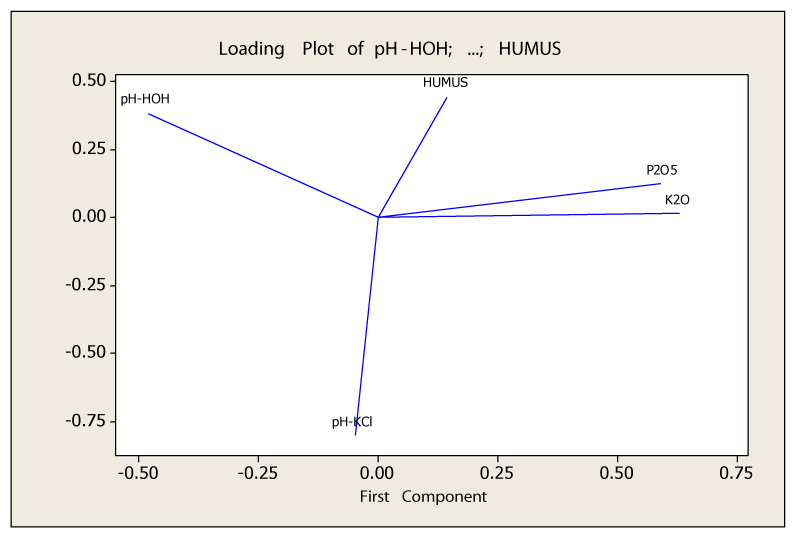
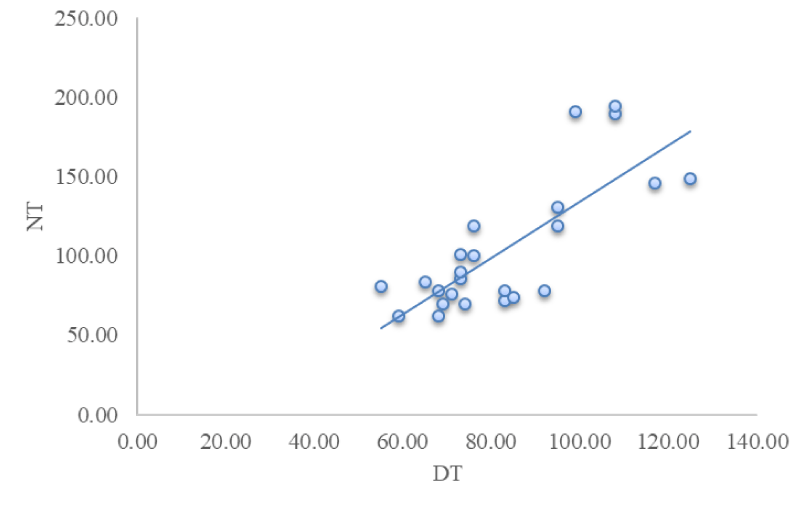
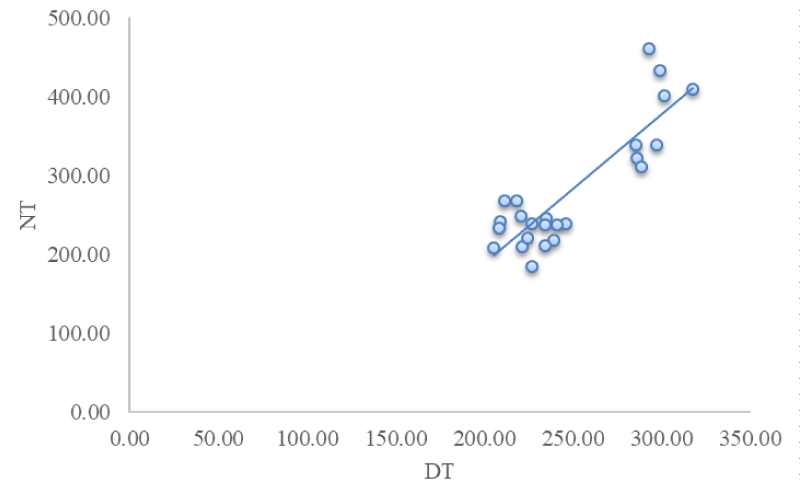
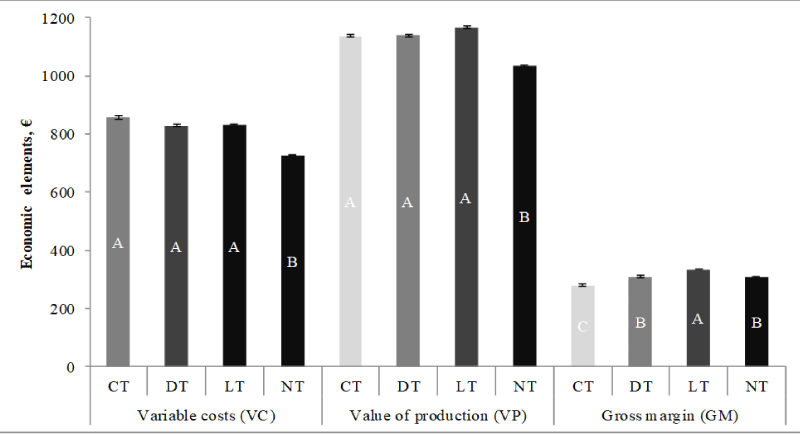
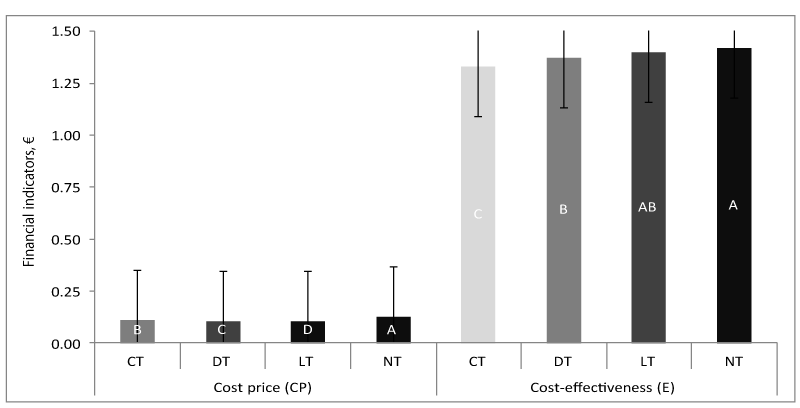
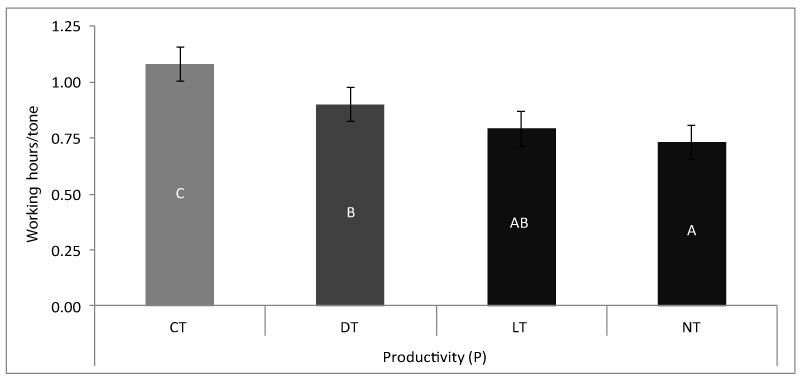
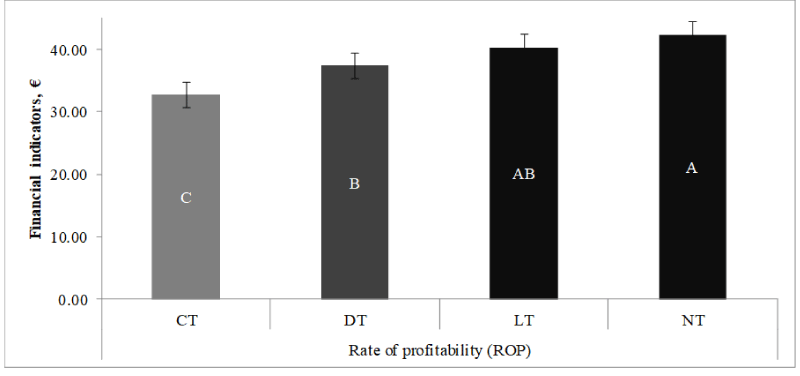

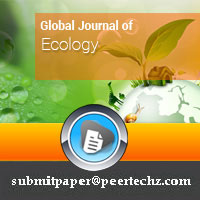
 Save to Mendeley
Save to Mendeley
